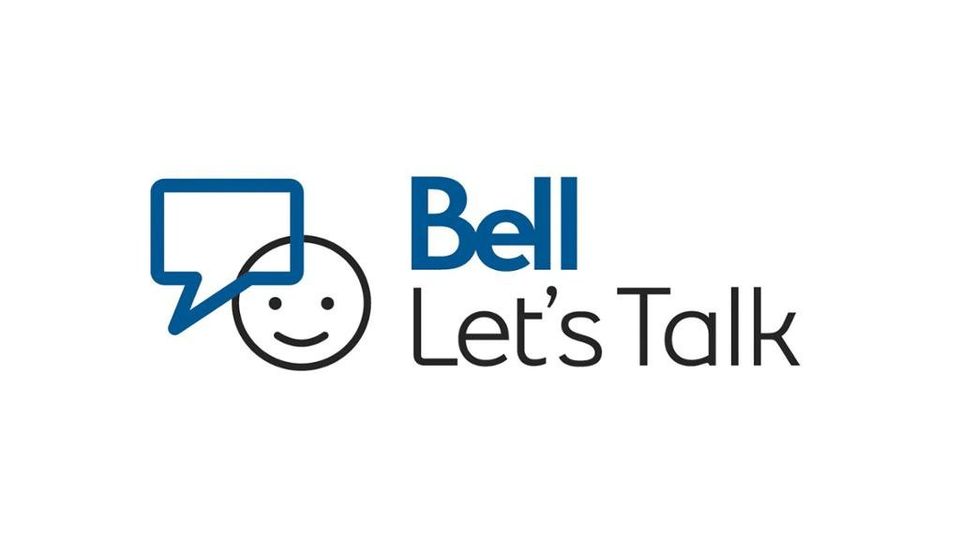Let's Talk? Instead, Let's Do It!
Supporting Mental Illness in the Workplace
By Anelle McLaughlin

The struggle to have mental illness recognized has been a long battle. It was rarely taken seriously, seen as weak, and little support was available. Personally, I grew to hate lines like “it’s all in your head”. Well, where else would it be then in the head? It’s called mental illness for a reason! Of course, I imagine it’s easier to buy into a physical illness. You can’t exactly ignore when your staff and colleagues look like they rose from the grave that morning, are taking some extra bathroom breaks, or you’re hearing that death rattle cough that sends everyone into a prayer circle of hoping they’re not the next to get hit.
When the wonderful Clara Hughes became the face of Bell’s Let’s Talk campaign, it almost felt like a watershed moment for some of us who struggle. Here is an amazing athlete with six Olympic medals in both summer and winter games, with all the success and publicity behind her, an Order of Manitoba and Officer of the Order of Canada and a billion other accolades. Here she is using this huge platform to say that she, too, struggles. Mental health issues tends to make one feel isolated and like no one understands, so knowing that if can affect anyone no matter what their life is like was a bit of a rallying point.
It’s no wonder that the campaign has grown significantly and has gone from some commercials and Facebook profile picture changes to companies talking about it. LinkedIn and other social media outlets are peppered every year with companies supporting this campaign and making their annual post about opening the discussion on mental illness, but why is it still hard to materially work with staff and colleagues’ struggles? They aren’t always visible and after so many years of stigma and minimization how can we be comfortable saying out loud what has been brushed off for so long?
Let’s change “Let’s Talk” into “This is What We Do”
To be frank and a little stern, it’s not enough to just talk. It’s not enough to make a post once a year. Have you asked staff either up front or via an anonymous survey how they feel about mental health initiatives? Do you have any in place? Do you post #letstalk and donate to Bell with one hand but penalize struggling staff with the other? What is your reputation amongst staff and former staff when it comes to mental health? What would truly be your reaction if an employee texted you with unvarnished honestly about what’s happening – sorry, I woke up this morning and was hit with a crushing wave of disappointment that I was alive and can’t even look at myself so I need a bit of time to deal with those thoughts – what is your honest reaction? What’s your plan for an employee who does end up self-harming or worse? Have you ever assessed if you are in fact, part of the problem?
Does your talk actually match what’s happening in your company? What do you DO to support your staff with mental illness?
As our culture evolves to understanding mental illness and treating it as a legitimate issue and as our technology changes why not harness these factors and take a more holistic approach? We’re not just talking EAPs and having therapy reimbursement as part of benefits. Anyone who suffers from mental illness can tell you that issues don’t just magically disappear after a phone call or a session. In fact, sometimes things crater before they get better after seeing a therapist! It’s not just about being a little tired and sad, mental illness can make the smallest things overwhelming and it’s so hard to have the confidence to tell your boss that you are struggling.
So ask yourself…do my practices hold up with the image I am trying to project? If not, here are some ideas to help you get started:
Change your mentality
– Chances are if you are the kind of manager who doesn’t have a lot of awareness and come from the world of “suck it up”, the first change that needs to be made is you. Educate yourself on mental health, how it affects the brain, how it relates to productivity and the workplace, and start treating it like the medical condition that it is. Don’t be afraid to talk to staff too. Even an anonymous survey could be eye opening!
Lead from the top down
– Often times, people in senior management and C-suite positions themselves have experienced mental health challenges and understand where it’s coming from. In some cases, these experiences had led leadership to create in-house initiatives to help everyone. But you don’t need to experience it to lead the charge. Do some research, maybe talk to connections in companies who have done this work, and see what you can come up with!
Foster an open environment
– Opening up at work can be a nightmare for the best of people. Many fear losing out on career growth, other opportunities, losing out on promotions, and maybe even lose the job itself. Senior leadership can help shatter this stigma and lead open spaces and show a desire to help.
Curate mental health training
– Did you know that you can train people on mental health first aid? That’s always a good start. You can also register for seminars, webinars, or even sign up for/develop your own online classroom programs. Teaching especially line managers about their duty of care can make a world of difference and help decrease stress and isolation.
Accommodations might help
– Accommodation strategies can include working remotely, shifted start/end times to coincide with medications, split shifts to help with waves, opportunities to make up lost time or flexible scheduling, peppering smaller breaks throughout the day, have exchange of duties between employees. You may also want to consider a proactive approach and include the employee on various action plans, consider management approach, and keep meeting to see what’s working. Accommodations can also be cost effective!
Be prepared for the worst
– It’s not everyone’s favourite thing to think about and it can be uncomfortable, but have a crisis plan in place that is both reactive and proactive. This is where considering mental health first aid training is a great idea. Also consider including post-crisis workplace care and return to work plans.
Educate your staff
– The word of the day of course is stigma, and if you’d like to provide leadership and understanding to support staff with mental health issues while keeping employee confidentiality then keep these initiatives and resources visible. This will not only eliminate some questions from staff not involved, but also create awareness, support, and understanding. It can also enable employees who are struggling to come forward and access the help you now have available.
Share your wellness programs
– Believe it or not, how you support mental illness in the workplace can also be a benefit to candidate attraction and staff retention. Younger workers and the next wave of management have grown up acutely aware of mental health issues and in a society that has been slowly encouraging self-care, openness, and support. They have also grown up with the wonders of technology and know that for most jobs out there, remote access and work and other accommodations are possible. A workplace that takes care of their staff is an attractive workplace. Absolutely take advantage of social media leverage and show what you offer and how seriously you take your duty of care.
There are plenty other of ideas and practices right at your fingertips, so I encourage everyone to dive deep and see how they can help employees struggling with mental health issues perform their best. While it always helps the bottom line to keep staff, reduce turnover and absenteeism, and attract candidates you can also count on the satisfaction of having your employees out in the world speaking highly of your organization. Who knows, when they’re making their personal posts on next year’s “Let’s Talk” Day maybe they’ll talk about the amazing strides their employers made in understanding and supporting mental health.
Make 2020 the year you change “Let’s Talk” to “Let’s Do It”.













